- Home
- William Faulkner
Snopes: The Hamlet, the Town, the Mansion
Snopes: The Hamlet, the Town, the Mansion Read online
1994 Modern Library Edition
Copyright © 1994 by Random House, Inc.
Introduction copyright © 1994 by George Garrett
The Hamlet: Copyright 1931 and renewed 1958 by William Faulkner. Copyright 1932 and renewed 1959 by The Curtis Publishing Company. Copyright 1931, 1936, 1940 by Random House, Inc. Copyright renewed 1964 by Estelle Faulkner and Jill Faulkner Summers. Copyright © 1964 by Estelle Faulkner and Jill Faulkner Summers.
The Mansion: Copyright © 1955, 1959 by William Faulkner. Copyright renewed 1983 and 1987 by Jill Faulkner Summers.
The Town: Copyright © 1957 by William Faulkner. Copyright renewed 1985 by Jill Faulkner Summers. Copyright © 1957 by The Curtis Publishing Company.
All rights reserved under International and Pan-American Copyright Conventions. Published in the United States by Random House, Inc., New York, and simultaneously in Canada by Random House of Canada Limited, Toronto.
Modern Library and colophon are registered trademarks of Random House, Inc.
The Hamlet, The Mansion, and The Town were all originally published by Random House, Inc.
Portions of The Hamlet were previously published as short stories as follows: “Spotted Horses” and “Fool About a Horse” were published in Scribner’s Magazine; “The Hound” was published in Harper’s Magazine; “Lizards in Jamshyd’s Courtyard” was published in The Saturday Evening Post.
A portion of The Mansion was published in Mademoiselle under the title “By the People.”
Library of Congress Cataloging-in-Publication data is available.
eISBN: 978-0-307-79141-2
Modern Library website address: www.modernlibrary.com
v3.1
CONTENTS
Cover
Title Page
Copyright
Introduction
THE HAMLET
Contents
Book One: Flem
Chapter One
Chapter Two
Chapter Three
Book Two: Eula
Chapter One
Chapter Two
Book Three: The Long Summer
Chapter One
Chapter Two
Book Four: The Peasants
Chapter One
Chapter Two
THE TOWN
Chapter One
Chapter Two
Chapter Three
Chapter Four
Chapter Five
Chapter Six
Chapter Seven
Chapter Eight
Chapter Nine
Chapter Ten
Chapter Eleven
Chapter Twelve
Chapter Thirteen
Chapter Fourteen
Chapter Fifteen
Chapter Sixteen
Chapter Seventeen
Chapter Eighteen
Chapter Nineteen
Chapter Twenty
Chapter Twenty-one
Chapter Twenty-two
Chapter Twenty-three
Chapter Twenty-four
THE MANSION
Contents
Mink
Chapter One
Chapter Two
Chapter Three
Chapter Four
Chapter Five
Linda
Chapter Six
Chapter Seven
Chapter Eight
Chapter Nine
Chapter Ten
Chapter Eleven
Flem
Chapter Twelve
Chapter Thirteen
Chapter Fourteen
Chapter Fifteen
Chapter Sixteen
Chapter Seventeen
Chapter Eighteen
William Faulkner
Other Books by This Author
Also by William Faulkner
INTRODUCTION
At the living center of the life work of William Faulkner are the novels and stories which deal with Yoknapatawpha County, that imaginary and deeply imagined place, at once based on and derived from his real home country, Lafayette County, Mississippi; but nevertheless independent with its own myths and legends, its own long and shadowy history, its diverse populations, its places much like places he had known and yet altogether his own invention. And at the heart of the fictional accounting of Yoknapatawpha County stands this trilogy—The Hamlet (1940), The Town (1957), and The Mansion (1959)—here joined together, as he had always hoped and planned they would be, as one continuous and sequential narrative.
Since constant change, the overwhelming and universal energy of change (for the better and for the worse) is an almost obsessive theme in Faulkner’s fiction, the story of the Snopes family, from the Civil War until nearly the here and now, is itself constantly changing. There is consistency, to be sure, even though the books were written years apart, interrupted by other books and projects and at otherwise very busy times of his life. Faulkner and his later editors—Saxe Commins for The Town and Albert Erskine for The Mansion—made a serious effort to reduce and to modify, if not to eliminate discrepancies in the individual novels and, indeed, with many other bits and pieces of the Snopes story as it had emerged, early and late, in other novels and in many of the short stories. The author’s note at the outset of The Mansion is a kind of credo celebrating his “hopes that his entire life’s work is part of a living literature, and since ‘living’ is motion, and ‘motion’ is change and alteration and therefore the only alternative to motion is un-motion, stasis, death, there will be found discrepancies and contradictions in the thirty-four-year progress of this particular chronicle.…”
Even so, Faulkner was perfectly consistent about his aims in the reconciliation of the Snopes material: that consistency should, in fact, work backward from the latest version. Thus a given detail in The Mansion can be taken as the authentic version, but by and large the factual details of the story need not match each other exactly. As he wrote to Albert Erskine: “What I am trying to say is, the essential truth of these people and their doings, is the thing; the facts are not too important.”
One of the deepest sources of Faulkner’s art and vision is to be found in his habitual conservation of literary material, a kind of routine recycling that allowed him (and his readers) to review and renew events, characters, places, and things—the whole experience of a story from a variety of different angles and points of view. A visionary writer by nature, he was also continually revising, in the context of new work as if freshly remembered, stories he had already told. He was thinking about the Snopes material in the early 1920s, and already by 1926, he was writing some versions of it. Because of the hypnotic impact and signature of his style (styles, plural, would be more accurate), it is easy to miss the wild variety of his work. As an ever-exploring craftsman Faulkner was relentlessly, extravagantly innovative. Among all of his novels no two are constructed in exactly the same manner or told in precisely the same way or from the same points of view. Each is a new artistic adventure, making new and sometimes surprising demands on the reader. (Faulkner is not, not even at his most complex, “hard” to read, but he insistently invites the reader to a deeper engagement in the experience of the story. To that extent he honors his readers, allowing them to bring as much as they can to the shared experience.) What relates each of the Yoknapatawpha novels, and especially the Snopes trilogy to each other, among other things, is his habit of returning to old stories and reclaiming them for a new look. He invites his reader to remember as well as to encounter events.
The Snopes trilogy, though its forward motion and action, events and plot are riddled with remembering, moves inexorably and chronologically ahead, from the late nineteenth and early twentieth century rur
al world of Frenchman’s Bend in The Hamlet through the first quarter, and then some, of our century in the county seat of Jefferson in The Town, ending there in 1948 in The Mansion. We move from the timeless world of poor farmers and sharecroppers, the “Peasants,” a world not essentially different from the rural life of all recorded history, into our own times. The world that we know comes alive, comes to be before our eyes. The automobile replaces the mule and wagon. The Memphis airport—a hundred driving miles away, not the railroad—becomes the link to the larger, wider world. And yet the past, the world of The Hamlet vividly endures, linked by characters and by stories about them, stories they tell. The past persists and is forever modified by the memories and myths, the speculation and the insatiable curiosity of the central characters, some of whom are, appropriately, the chief tellers of the tale. The Hamlet, though it has many tales told in the quoted words of its chief characters—especially the wonderful V. K. Ratliff, itinerant salesman of sewing machines and the true custodian and preserver of the county’s history and news (which become history and legend soon enough)—has an overall, omniscient narrator possessed of a kind of collective voice, a master of many voices and moods. And points of view. There are virtuoso moments as, for example, in the first chapter of Book Three, “The Long Summer,” the narrator gently, even sympathetically inhabits the consciousness of Ike Snopes, the idiot in love with a cow, and even, for a moment, presents reality from the cow’s point of view. Mostly the narrator offers a collective point of view (not altogether unlike that of Ratliff) or limits his focus to a deeply sympathetic, yet utterly unsentimental version of the vision of a single character. Sometimes the narrator indulges himself and talks to us in rich mouthfuls of words, as if words were paint to be flung against his canvas. Sometimes this is for fun as when the fart of an old horse, in the opening sentence of Book Three, is described as “the rich sonorous organ-tone of its entrails.” But the same high style is used to enhance events ad to lift the ordinary to the level of the uncommon. See for yourself how Eula Varner is perceived and presented to us in Book Two.
The Town is entirely told by three voices: first by Charles Mallison, who was not yet born when half the events of the story took place and calls himself, in the second paragraph of the first chapter, the collective point of view of the town of Jefferson; by the highly educated (Harvard and Heidelberg) lawyer, Gavin Stevens, an indefatigable talker who can manage some stylish mouthfuls on his own; and by his friend Ratliff, a patient listener who has learned some wisdom. The three, taken together, tell the whole story and very gradually begin to sound more and more like each other as they influence each other. In The Mansion the original third-person narrator returns now to share the telling with the same three monologists from The Town.
Clearly, then, one of the things that the whole Snopes trilogy is “about” is story-telling, how stories come to be and come to us and how the sum and substance of them become our history; how history is made. In a larger sense the history of Yoknapatawpha County becomes, as Faulkner planned and hoped, by action, event, allusion, and echo, a version of the history of the world. In that sense the cumulative story of that one place is the story of every place.
The surface of these novels, this trilogy, is complex, often intricate. But the tale, itself, is passionately simple. It follows the almost uninterrupted rise of Flem Snopes, from poverty and obscurity to power, first in the county and later in the town where he manages also to acquire the patina of respectability, if not honor, peaking as a bank president and a deacon of the Baptist Church—a paradigm, then, of the American dream of upward mobility, except for the undeniable fact that each and every step of the way has been achieved by every conceivable kind and form of merciless double-dealing—from simple scams worked on the illusions of simple people (never forget that Ratliff, too, falls victim at the end of The Hamlet and learns a lot thereby) to overt acts of blackmail and extortion, larceny, grand and petty. Nothing is too small for the ruthless, greedy attention of Flem Snopes; and, until the very end of the trilogy he is secure in his shamelessness. Most of the swarming Snopes clan—though not all by any means; bear in mind the honorable and successful Wall Street Panic Snopes—are up to no good most of the time, fascinating and repulsive and often as funny as can be. But Flem is the master Snopes, identified like his aristocratic counterpart, Jason Compson, who has a significant cameo role, as a true son of Satan, a banal and evil man.
All by himself, Flem Snopes would be worth a trilogy or more, but the two women in his life (never mind how and why; read and find out), the fabulous Eula Varner Snopes, heir to Lillith and Helen of Troy, and her daughter, Linda, are equally remarkable creations, both doomed and tragic figures, though with a difference; the first raised to mysterious and mythical proportion, both biblical and classical, by all her beholders and a multitude of admirers; the latter more “real” to those close around her (thus to readers also).
The only two characters in the trilogy of whom we are not invited to share the inner experience of consciousness are Flem and Eula. Mysterious to others, they become the occasion for steady and unrelenting speculation. We know them only from their works and ways. They keep their secrets to the end. They remain always able to surprise us, and everyone else, fictional and real, for as loas they live. Nevertheless, we notice, suddenly and briefly, some special truths about the. In The Town we learn in one flashing moment, when Eula confronts her profoundly romantic admirer, Gavin Stevens, that, mythical creature or not, she can be coldly pragmatic and ruthlessly single-minded when she thinks she has to be. She is something more and different, in truth, than anyone had imagined her to be. Flem’s nefarious career, in all three novels, is so marked by success that we tend not to notice his few failures or the true source of his power over others. His powers work, like those of any confidence man, only by appealing to the greed of others. When as in the case in the first chapter of The Town, the two black men, Tom Tom and Tomey’s Turl, set against each other and sorely abused by Snopes, manage to get together, swallow their pride, and come to “complete federation,” Snopes is beaten. We know then that he is not invulnerable.
There are so many things to celebrate about this magnificent trilogy. I have elected here to speak, in awe and honor, about only a couple of things. One is the rich variety of Faulkner’s method, his endlessly inventive ways and means of telling stories. He has opened up new territories for all the writers who have come and will come after him. He has changed our ways of thinking about the power and glory of fiction. He has challenged writers and readers alike, all over the world, to bring and to give to the experience of his art nothing less than the best they have. He has demonstrated that they (we) will be well rewarded.
And I have stressed his magical capacity at characterization. The events, outrageous or quotidian, that occur in these novels are perfectly presented, executed with a timing and finesse that the finest athletes could envy. But they work, they capture our attention and sustain our involvement because they happen to characters we can care about and believe in. He presents the surface—Flem’s bow tie, Ratliff’s blue shirt, Stevens’ corncob pipe—directly and engages us with an intense physicality. Their flesh and bones seem real enough to suffer or rejoice, and the world they move in is not so much described as felt. And, above all, no matter how foolish or flawed they may be, no matter how educated or ignorant, they are blessed with the equality of an inner life and being that renders even the least of them worthy of full attention. All of this is clear, at once poetic and explicit, in the final pages of The Mansion when both Stevens and Ratliff unknowingly echo the prayer of the preacher Goodyhay—“Save us, Christ, the poor sons of bitches.” And the classic poor s.o.b. Mink Snopes has a final and authentic vision of himself among the dead, “himself among them, equal to any, good, as any, brave as any, being inextricable from, anonymous with all of them.…” Faulkner has been sometimes faulted for giving deep thoughts and feelings to common characters, but that criticism can come only from a dif
ferent vision of mankind, a vision as cold and mechanical as that of Flem Snopes. Faulkner’s inclusive, democratic vision of the equality of human souls shines through all his characters and makes them matter. There is much laughter in the Snopes trilogy, but there are tears also.
A great deal has been written by scholoars and critics about Faulkner and about this trilogy. Some of it is extremely valuable to a fuller and deeper appreciation of his work. But my strong suggestion to readers coming to these novels for the first time (and there will be generations of you) is to plunge in and fare forward, allowing the experience of the story to happen as it does, without any additional mediation or guidance. Experience y before turning to or trusting the opinions and judgments of others, myself included.
The one big exception to this rule is the biography by Joseph Blotner, preferably the revised, one-volume version of 1984, wherein the story of the creation of the Snopes novels and the public reception of each as it first appeared is followed closely and accurately and does not in any way lessen the original impact. It also seems to me likely that the words and thoughts of Faulkner, himself, about these books, to be found in the Selected Letters of William Faulkner (1977) can only serve to enhance the reader’s experience.

 Faulkner Reader
Faulkner Reader Collected Stories
Collected Stories The Sound and the Fury
The Sound and the Fury A Rose for Emily and Other Stories
A Rose for Emily and Other Stories Uncollected Stories of William Faulkner
Uncollected Stories of William Faulkner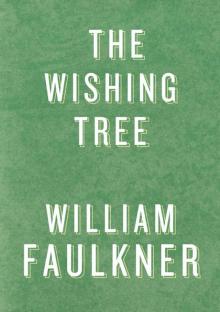 The Wishing Tree
The Wishing Tree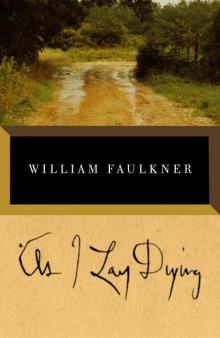 As I Lay Dying
As I Lay Dying The Unvanquished
The Unvanquished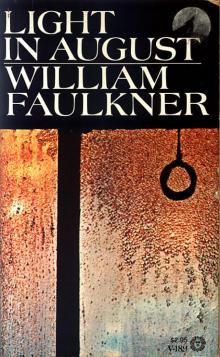 Light in August
Light in August Sanctuary
Sanctuary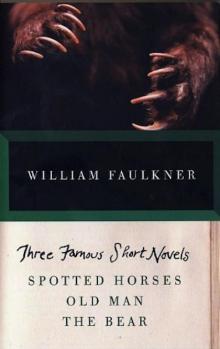 Three Famous Short Novels: Spotted Horses Old Man The Bear (Vintage)
Three Famous Short Novels: Spotted Horses Old Man The Bear (Vintage) The Marble Faun and a Green Bough
The Marble Faun and a Green Bough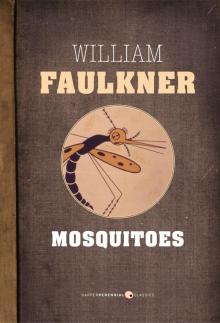 Mosquitoes
Mosquitoes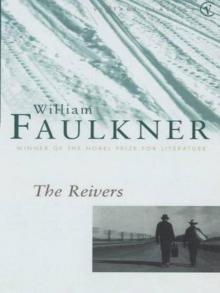 The Reivers
The Reivers Father Abraham
Father Abraham![The Wild Palms: [If I Forget Thee, Jerusalem] Read online](http://i1.bookreadfree.com/01/the_wild_palms_[if_i_forget_thee_jerusalem]_preview.jpg) The Wild Palms: [If I Forget Thee, Jerusalem]
The Wild Palms: [If I Forget Thee, Jerusalem]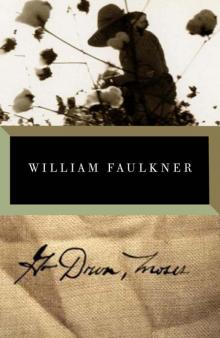 Go Down, Moses
Go Down, Moses These 13 (1931)
These 13 (1931) The Essential Faulkner
The Essential Faulkner Snopes: The Hamlet, the Town, the Mansion
Snopes: The Hamlet, the Town, the Mansion A Fable
A Fable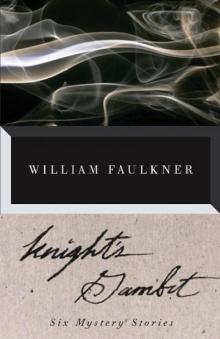 Knight's Gambit
Knight's Gambit Requiem for a Nun
Requiem for a Nun Essays, Speeches & Public Letters
Essays, Speeches & Public Letters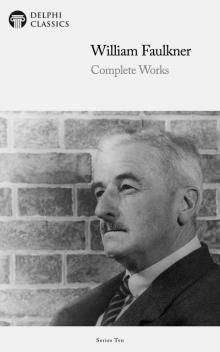 Complete Works of William Faulkner
Complete Works of William Faulkner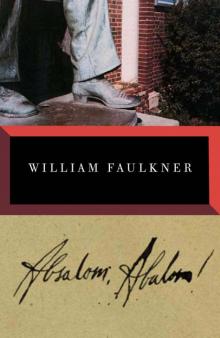 Absalom, Absalom!
Absalom, Absalom! Big Woods: The Hunting Stories
Big Woods: The Hunting Stories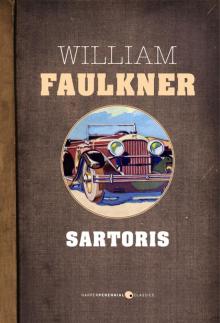 Sartoris
Sartoris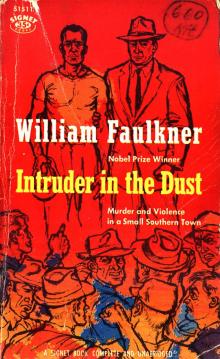 Intruder in the Dust
Intruder in the Dust These 13
These 13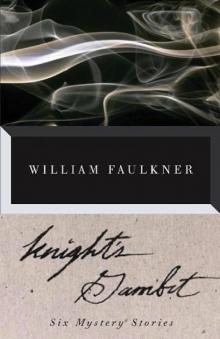 Knight's Gambit (Vintage)
Knight's Gambit (Vintage)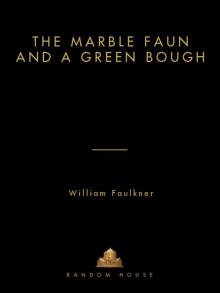 Marble Faun & Green Bough
Marble Faun & Green Bough Unvanquished
Unvanquished Big Woods
Big Woods